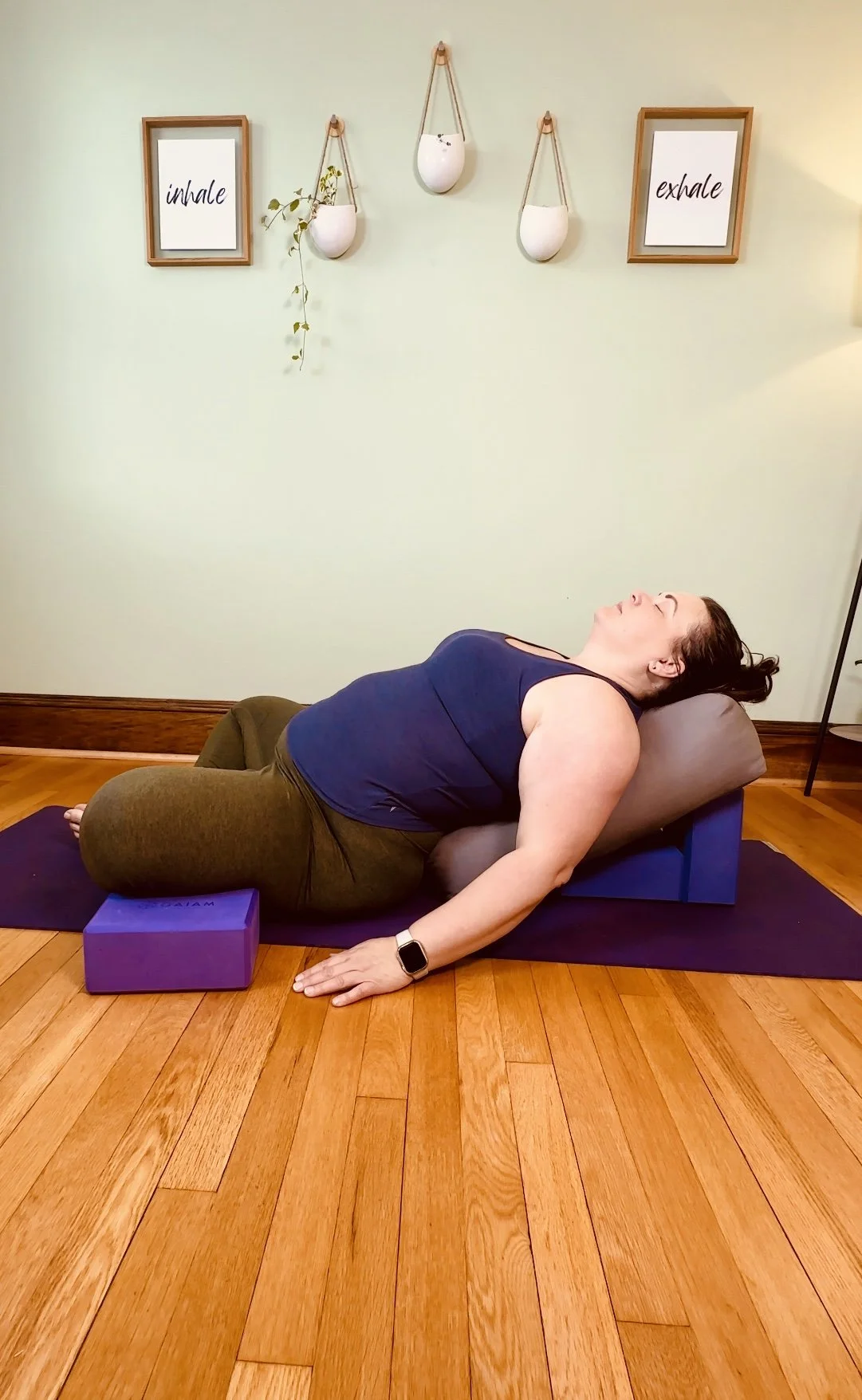The Power of Restorative Yoga for Healing and Well-Being
In today’s culture of constant doing, true rest can feel like a forgotten art. Yet, healing — whether physical, emotional, or mental — happens most deeply when we allow ourselves to slow down, breathe, and simply be.
Restorative Yoga isn’t just a passive form of yoga; it’s an active, intentional healing practice that taps into the body's innate wisdom. In this blog, I’ll explore the benefits of restorative yoga, and how even a few minutes of this practice each day can shift your nervous system, boost your immune system, and ignite profound healing from the inside out. 🌿
Restorative Yoga and Mental Health 🧠✨
Restorative Yoga is more than just rest—it's a powerful tool for healing. In a 10-week restorative yoga program, women with ovarian or breast cancer reported significant improvements in mental health, including reduced depression and anxiety, along with an overall increase in quality of life.
This gentle practice activates the parasympathetic nervous system, helping to trigger the body’s relaxation response. In doing so, it cultivates a deep sense of safety and connection within, expanding our window of tolerance and enhancing our ability to navigate stress with greater mindfulness, presence, and ease. 🌿
The Science Behind the Practice 🔬🧬
A 2018 study involving 140 participants revealed that yoga can have a measurable anti-inflammatory effect on the body. While acute inflammation is a natural immune response, chronic inflammation is linked to many long-term health issues, including cardiovascular disease, autoimmune conditions, and more. ⚠️
The good news? Practicing just 30 to 90 minutes of restorative yoga each week may support your long-term health and vitality by reducing chronic inflammation. 💪💫
What Happens in a Restorative Yoga Session 🛏️🕯️
In a typical restorative yoga session, you’re guided into long-held, fully supported poses using props like bolsters, blankets, and blocks. This support allows the body to fully release and rest, gently revealing where tension is being held. 🪷
As the body unwinds, you enter a state of conscious relaxation. Oxygen consumption decreases, blood lactate levels (associated with anxiety) drop, and brain waves begin to slow—guiding you into a deeper state of rest. 💤
Remarkably, even just 10 to 20 minutes of restorative yoga can activate this relaxation response. ⏱️💓
The Power of Intentional Rest 🌙🧘♂️
Restorative Yoga invites you to pause, soften, and reconnect. It offers your body and mind the space they need to heal, restore, and thrive—gently, yet profoundly. 🌸✨
Join me each week for Rest & Recover: A Restorative Yoga Practice for Busy Women
Three Restorative Yoga Poses you can do now
Viparita Karani Asana
(Legs up the Wall Pose)
Viparita Karani Asana (Legs Up the Wall Pose) serves as a gentle and restorative inversion practice without placing pressure on the head and neck. It is a lovely pose for calming stress and anxiety, improving blood circulation, and resting tired legs To practice, rest your legs comfortably against the wall and relax your arms on the floor. You can also place a bolster or folded blanket underneath your hips and sacrum for added comfort & support. Rest in this pose for 5-10 minutes (longer if you’d like), breathing easefully and gently.
Balasana
(Child’s Pose)
One of my go-to poses for relieving tension in my mind and body, Balasana can offer a gentle lengthening in the spine and a sense of safety in your body. To practice, come onto wide knees and place a bolster between the knees. Place 1-2 folded blankets (more if needed) to provide enough height to support your upper body. Hinge forward and fold over the bolster, resting your arms on the floor or stacking your hands underneath your forehead. Stay here for 5-10 minutes and invite tension in your head, neck, and back to soften and release.
Supta Baddha Konasana
(Reclining Bound Angle Pose)
A gentle hip-opener, this pose stimulates the abdominal organs, supporting both the digestive and reproductive systems. To practice, from a seated position place a bolster lengthwise behind your lower back, then lie back on the bolster. Place a folded blanket underneath the head for additional support if needed; alternately, you can place two blocks (one set tall, and one set medium) in a T shape underneath the bolster (as seen here). Bring the soles of the feet together and open the knees wide, resting the outer thighs on blocks or blankets to support the inner thighs and groin. Rest the arms on the floor, placing folded blankets or blocks underneath them to provide support for the chest and shoulders. Stay here for 5-20 minutes and breathe slowly, exhaling slower than your inhale.
Ready to try it for yourself? Join me each week for Rest & Recover: A Restorative Yoga Practice for Busy Women!
Resources
Forbes B, Akturk C, Cummer-Nacco C, Gaither P, Gotz J, Harper A, & Hartsell K. (2008) “Using Integrative Yoga Therapeutics in the Treatment of Comorbid Anxiety and Depression.” International Journal of Yoga Therapy
Falkenerg RI, Eising C, & Peters ML. (2018) “Yoga and immune system functioning: a systematic review of randomized controlled trials.” Journal of Behavioral Medicine
Benson H & Klipper MZ (1975) The Relaxation Response



